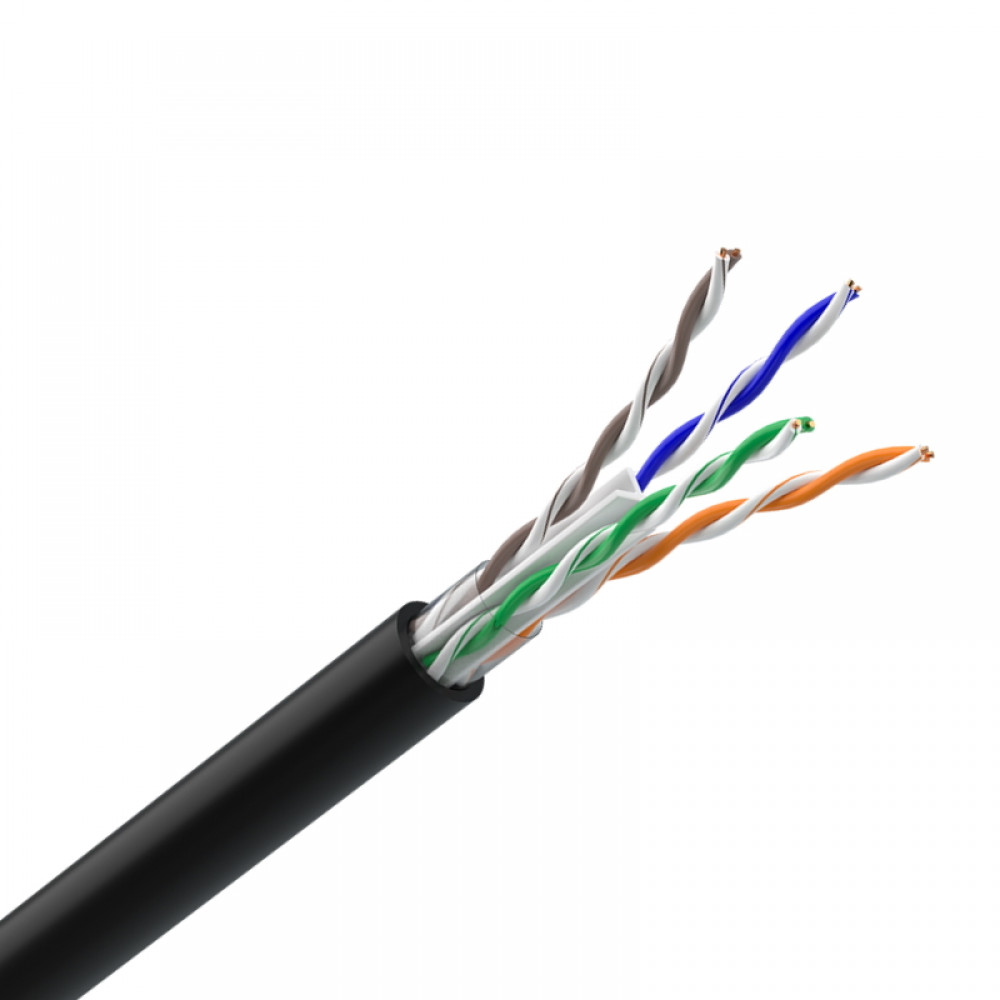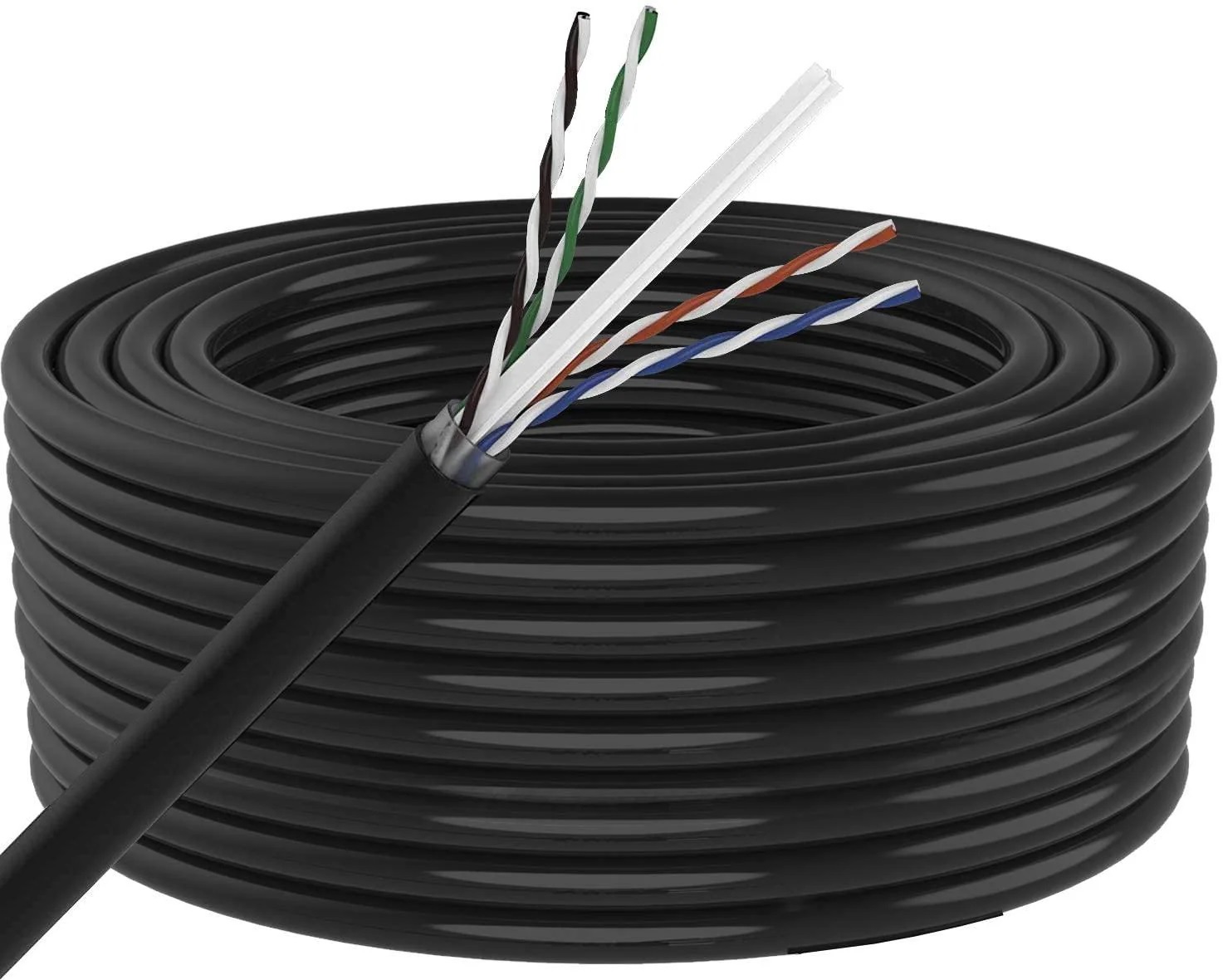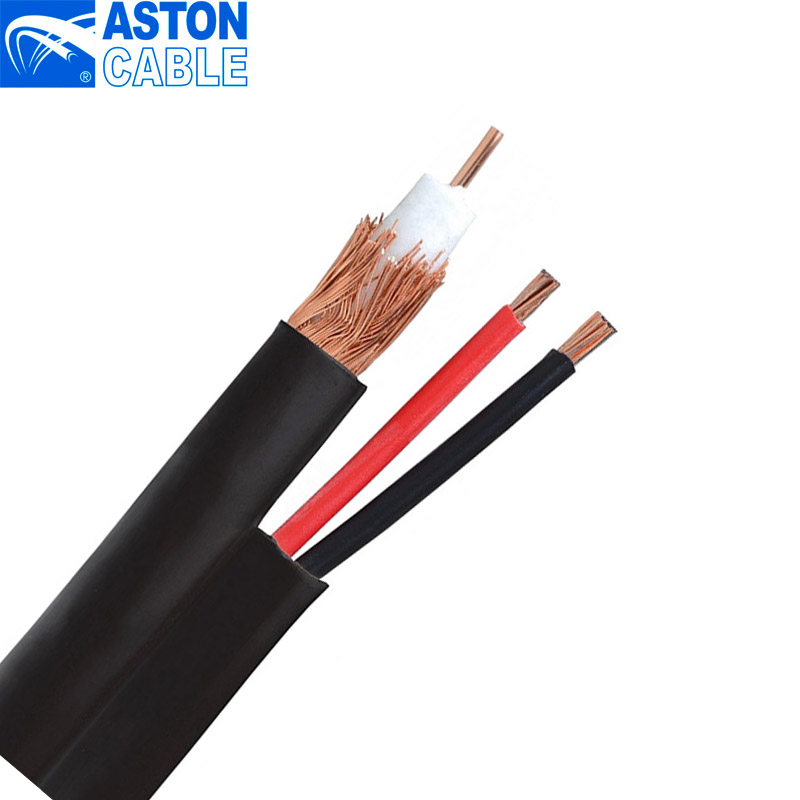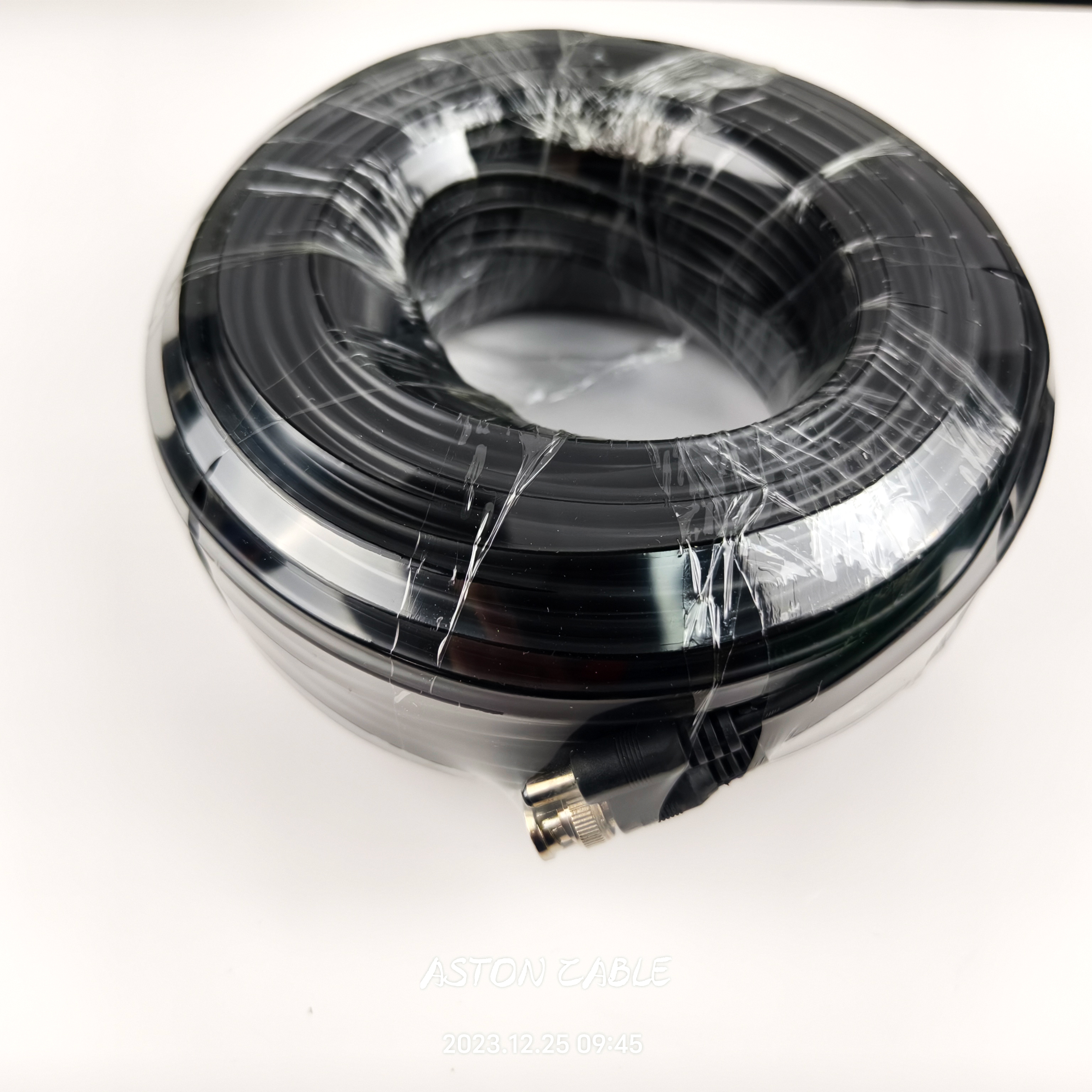| Feature | Specification |
|---|---|
| Bandwidth | Up to 500 MHz |
| Jacket Type | CMX (PE) |
| Maximum Distance for 1 Gbps | 328 ft / 100 meters |
| Compliance | ANSI/TIA 568.2-D |
| MOQ | 200 Rolls * 305 meters |
Common Product Specifications
| Parameter | Detail |
|---|---|
| Conductor | 23AWG Bare Copper |
| Core | 4 Pairs Stranded Conductor |
| Insulation | PE |
| Outer Jacket | PE or Double Jacket (PVC & PE) |
| Shielding | None |
| Drain Wire | CCA/BC/TC |
Product Manufacturing Process
According to authoritative sources, the manufacturing process of CAT6 network cables involves several key stages to ensure high performance and reliability. Initially, high-purity copper is drawn into fine wires and annealed to improve ductility. These copper wires are then twisted into pairs, with each pair receiving tighter twists to reduce crosstalk. Following this, the twisted pairs are insulated with Polyethylene (PE) and assembled into a cable core. A protective PE or a combination of PE and PVC jacket is applied to safeguard against environmental factors. Advanced testing for compliance with standards like ANSI/TIA 568.2-D is conducted to ensure the cable meets required specifications.
Product Application Scenarios
As per relevant research, CAT6 cables are predominantly used in environments requiring high data transfer rates and reliability. In Local Area Networks (LANs), they connect devices such as computers, switches, and routers, ensuring efficient data transmission. Data centers benefit from CAT6 cables due to their ability to handle large volumes of data quickly. For Voice over Internet Protocol (VoIP) applications, the superior signal quality and reduced noise interference of CAT6 cables are crucial. Additionally, Power over Ethernet (PoE) applications utilize CAT6 cables to deliver power and data simultaneously, making them ideal for CCTV systems and wireless access points.
Product After-Sales Service
- 24/7 Customer Support
- Warranty and Replacement Services
- Technical Assistance and Troubleshooting
- Return and Refund Policies
Product Transportation
Our CAT6 network cables are packaged in standard export packaging and shipped from the Ningbo port. We ensure timely delivery and safe transportation by partnering with reliable shipping companies. Each order is carefully inspected and tracked to guarantee it reaches you in perfect condition.
Product Advantages
- Higher Performance: Supports up to 10 Gbps over limited distances, ideal for modern networking needs.
- Future-Proofing: Investing in CAT6 cables ensures readiness for future technological advancements.
- Reduced Interference: Tighter twists and additional insulation minimize crosstalk and electromagnetic interference.
- Versatility: Suitable for various applications, from LANs to VoIP and CCTV systems.
Product FAQ
- What is the maximum distance for 10 Gbps speeds with CAT6 cables?
The maximum distance for 10 Gbps speeds is 55 meters. - Can CAT6 cables be used for outdoor installations?
Yes, our CAT6 cables come with a waterproof PE jacket, making them suitable for outdoor use. - Are these cables compatible with older Ethernet standards?
Yes, CAT6 cables are backward compatible with Cat5, Cat5e, and Cat3 standards. - Do the cables meet international standards?
Yes, our CAT6 cables comply with ANSI/TIA 568.2-D, ISO9001, ISO14001, RoHS, CE, and IEC standards. - What is the minimum order quantity?
The minimum order quantity is 200 rolls, with each roll being 305 meters long. - What material is used for the conductor?
The conductor is made of 23AWG bare copper. - What kind of insulation is used in these cables?
The cables use PE (Polyethylene) insulation to ensure signal integrity. - Are the cables UV resistant?
Yes, anti-UV particles are added to the jacket to enhance UV resistance. - What are the packaging details?
The cables are packaged in standard export packaging to ensure safe transportation. - What after-sales services are offered?
We provide 24/7 customer support, warranty and replacement services, technical assistance, and return and refund policies.
Product Hot Topics
- How to choose the right CAT6 cable for your network?
Choosing the right CAT6 cable depends on several factors including the required data transfer rate, installation environment, and specific network requirements. For outdoor use, ensure the cable has a waterproof and UV-resistant jacket. For applications requiring high-speed data transfer, opt for cables that support up to 10 Gbps over short distances. Compatibility with existing network infrastructure should also be considered. Consulting with a professional can help make an informed decision. - The benefits of using CAT6 cables in data centers
Data centers require reliable and high-speed networking solutions. CAT6 cables offer several advantages including higher data transfer rates, reduced crosstalk, and electromagnetic interference. These cables are designed to handle the high demands of data centers, ensuring efficient data transmission and network stability. Investing in CAT6 cables can lead to improved performance and scalability, making them a preferred choice for modern data centers. - Understanding the construction of CAT6 cables
CAT6 cables comprise four twisted pairs of copper wires, each twisted at different intervals to minimize interference. The cables are insulated with Polyethylene (PE) and often have a spline to further reduce crosstalk. The outer jacket is usually made of PVC or PE, providing protection against environmental factors. This construction ensures high performance, making CAT6 cables suitable for various networking applications. - Why CAT6 cables are ideal for VoIP applications
Voice over Internet Protocol (VoIP) applications require high-quality signal transmission with minimal interference. CAT6 cables are designed to meet these requirements, offering superior performance compared to older cable standards. The tighter twists and additional insulation in CAT6 cables reduce crosstalk and electromagnetic interference, ensuring clear and reliable voice communication. - The importance of future-proofing your network with CAT6 cables
As technology advances, the demand for higher data transfer rates and reliable network connections increases. Investing in CAT6 cables helps future-proof your network infrastructure, ensuring it can handle these demands. With support for up to 10 Gbps over short distances and 1 Gbps over 100 meters, CAT6 cables offer a versatile solution that can adapt to future networking needs. - Installation tips for CAT6 cables
Installing CAT6 cables requires careful planning and attention to detail. Avoid sharp bends and excessive tension to prevent damage. Ensure proper terminations and use compatible connectors to maintain signal integrity. Label cables for easy identification and future maintenance. For outdoor installations, choose cables with waterproof and UV-resistant jackets to ensure longevity. - The role of CAT6 cables in Power over Ethernet (PoE) applications
Power over Ethernet (PoE) technology allows the transmission of power and data over a single cable. CAT6 cables are well-suited for PoE applications due to their ability to handle higher data transfer rates and power requirements. They are commonly used in security cameras, wireless access points, and other devices that benefit from PoE technology, offering a reliable and efficient solution. - Comparing CAT6 and CAT5e cables
While both CAT6 and CAT5e cables are used in networking, there are significant differences between them. CAT6 cables offer higher bandwidth and data transfer rates, making them suitable for more demanding applications. They also have better performance in terms of crosstalk and electromagnetic interference. Although CAT6 cables are more expensive and less flexible, their advantages often justify the investment, particularly in environments requiring high performance. - The environmental benefits of using CAT6 cables
Many CAT6 cables comply with RoHS (Restriction of Hazardous Substances) and other environmental standards. These cables are designed to reduce environmental impact by avoiding harmful substances in their construction. Choosing RoHS-compliant CAT6 cables ensures a more sustainable networking solution, contributing to environmental protection. - Challenges of installing CAT6 cables in complex environments
Installing CAT6 cables in complex environments can present challenges such as dealing with tight spaces, navigating around obstacles, and ensuring proper cable management. Using the right tools and following best practices can help overcome these challenges. It's also important to consider factors like electromagnetic interference and physical protection to ensure optimal performance and longevity of the cables.
Image Description















